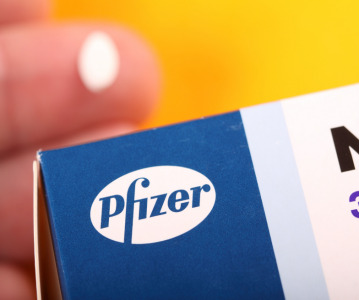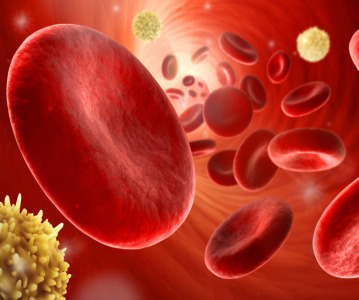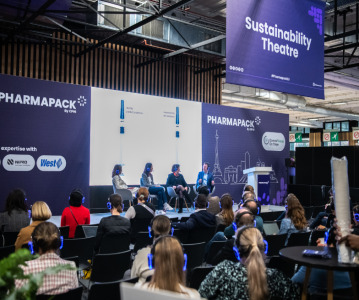Drug Patent Expiries: a steep cliff or opportunity for innovation?
.png)
The pharmaceutical industry faces a patent cliff together in the years leading up to 2030. Learn what this means for drug pricing, their outsourcing partners, and drug innovation of the future.
When AbbVie’s exclusivity for blockbuster monoclonal antibody (mAb) drug product Humira expired in 2023, a wave of biosimilar products brought the first real competition the product faced in over 20 years [1]. One of the best-selling drugs for the treatment of arthritis, Humira has been approved since 2002 for the treatment of other such indications as psoriatic arthritis, Crohn’s disease, and ulcerative colitis [1]. Because of its patent protection, Humira enjoyed drug sales of up to $21.2 billion by 2022 [1].
Numerous biosimilars have since launched at discounted prices compared with Humira [2]. However, Humira is not the only blockbuster drug facing such market competition at the end of its patent expiration. In the next 5 years alone, some of the biggest drug products on the market will have to contend with the loss of their patent protections and compete with generic and biosimilar products [3]. Between 2023 and 2030, it is expected that 18 of the largest pharmaceutical companies in the world will see the patents on their drug products expire for approximately 169 commercialised drugs [4]. While this spells competition for pharma companies, some of their manufacturing and research partners may be in more luck. A boom in generic and biosimilar innovation could potentially lead to increased outsourcing manufacturing activities. Conversely, contract organisations working with pharmaceutical companies scrambling to soften the blow of losing exclusivity may find themselves equally at a loss, both strategically and financially.
This article will explore the implications of current drug pricing policies and how the wave of patent expiries in the near future will affect the activities of pharmaceutical giants and contract organisations alike.
The bottom line of drug pricing negotiations and patent litigations
To understand the attitude pharmaceutical players have towards patent expiry, it is important to understand the factors that impact drug pricing. The pharmaceutical industry is, after all, a business.
While regional policies in drug pricing vary, there is a certainly increased effort by executive administrations to control drug pricing in a bid to increase patient access to essential medicines [5]. With the introduction of the Inflation Reduction Act from the Biden administration in 2022, pharmaceutical companies are now subject to negotiations for a maximum fair price (MFP) [6]. This is a similar model to the European Commission’s stance on negotiating drug prices with manufacturers, with failure to comply resulting in heavy fines or taxation [6].
In particular, these negotiations aim to target high-expenditure drugs that have not seen generic or biosimilar competition several years after market approval [6]. The IRA allows a company’s biologic to delay pricing negotiations if a biosimilar applicant expects to be launched in the market within the next 2 years [6]. The European Commission has proposed a shortened period of regulatory exclusivity to 8 years, with the option for companies to extend this period if the product is launched in all EU member states [7]. Concerns surrounding both plans focus on decreased incentives for pharmaceutical companies to invest in R&D while failing to address patient access to essential medicines – the main reason for the changes in the first place [7]. Pharma companies with a biologic on the market with no biosimilar or generic in the approval pipeline will need to contend with patent litigations or settlements in the face of upcoming pricing negotiations. The course of action chosen will ultimately decide whether the branded drug product continues as a source of revenue for the company or will need to be replaced with another blockbuster drug product in the drug development pipeline [6].
“Between now and the end of the decade, the patents on a number of blockbuster drugs will expire. Although this creates a patent cliff for those innovators, it is obviously well signposted for the companies before they arrive at it,” comments Matthew Appleton, Corporate/M&A Partner at A&O Shearman. “The question is what they expect the impact of the patent cliff to be, and how they propose to deal with it.”
Preparing for the patent cliff – together
While patent cliffs may, on the surface, be expected to create dips in innovation as companies focus their energies towards patent litigations and negotiations, this patent cliff may see a shift in strategic approaches for pharmaceutical companies and their outsourcing partners.
“The impact of patent cliffs themselves is also changing. The type of drug which will come off patent in the next few years are different to those which prompted a previous round of mergers in the 2010s,” explains Appleton. “[In the 2010s], the products were largely small molecules, which could be quickly replaced by generics at low cost. The next patent cliff relates more to biologics, which are not as easy to replicate at low cost,” Appleton states. “Therefore, the revenue hit on patent-holders – and the impact on strategy – may not be so immediate or severe. This may point to relatively smaller, more strategic acquisitions to fill less dramatic revenue gaps.” Forthcoming M&A deals this time round may in fact see bigger pharma companies bidding for biotechs and mid-tier companies.
A journey of strategic M&As also points to a degree of innovation companies must consider in facing this patent cliff. Johnson & Johnson (J&J), for example, have struck an agreement with competitors to delay the introduction of biosimilars for their innovative drug Stelara, a monoclonal antibody (mAb) for the treatment of Crohn’s disease that slated to lose patent exclusivity in 2023 [8]. Since 2023, J&J have consolidated its pharmaceutical divisions, rebranding as Johnson & Johnson Innovation Pharmaceuticals in order to launch 20 novel innovative drugs by 2030, thereby cushioning the expected fall in revenue from drugs such as Stelara facing patent expiry [8].
Yet, this patent cliff also sees some of pharma’s biggest names facing a similar challenge, which may not necessarily foreshadow a wave of M&A activities between pharma companies [9]. Rather, strategies may shift towards partnerships or acquisitions of biotechs and mid-tier companies, and perhaps even pure-play manufacturers that normally would be an outsourced collaboration [9].
“We have always seen cash-rich companies turn to inorganic growth, as well as organic R&D, to fill expected gaps in revenue,” Appleton states. “While this strategy will certainly continue, there have been a number of changes to the M&A landscape, which will mean an evolving dynamic for M&A strategies. Several of the sector’s bigger names will see blockbuster drugs come off patent around the same time, which may restrict the number of peers available for larger, revenue-protecting mergers. Equally, we are also seeing antitrust agencies become much more wary of large-cap M&A. This could prompt larger companies to look for relatively smaller companies to acquire rather than merging with their peers.”
In an EY Ecosystems Study, surveying those in the life sciences industry, it was found that expanding alliances across the pharmaceutical supply chain in addition to M&A activities can continue to drive growth during and beyond the patent cliff [10]. Increased efficiency, greater creativity and innovation, and accelerated time-to-market were all benefits proposed by an ecosystems approach towards industry collaborations [10]. In a time where development times and drug pipeline costs are increasing, the patent cliff stands to increase financial burdens with US$226 billion on the line [10]. Facing this cliff together may be the most rewarding strategy for those affected.
“The smart companies remain those that approach M&A as part of a continual growth strategy and with thoughtful foresight of patent cliffs and their impact,” concludes Appleton. “Investor confidence will always be instilled through a holistic approach to business development – maintaining a strong flow of inbound pipeline, alongside organic R&D, while taking a sophisticated and programmatic attitude to divestments off-patent products where the capital returns outweigh the revenue and EPS benefit.”
Innovation is key
All this is to say, with pharmaceutical companies contending with drug price negotiations and potential patent expiries, the theoretical result for CDMOs would be that of drug pipeline project cancellations, and a loss of associated partnerships and revenue [11]. But might there be a different outcome for outsourcing partners of pharma companies facing this patent cliff?
Again, it may come down to collaborations to drive innovation in response to loss of revenue. “Ecosystems are business arrangements between two or more entities designed to create and share a higher level of value collectively for a common set of customers than the members can create individually considering time, capital, brand permission, market access, and other real-world constraints,” defines EY [10]. Where CDMOs and CROs come in is supporting bigger pharmaceutical companies and mid-tier/smaller biotechs with the manufacture, production, and conduct of trials. These collaborations bridge gaps in innovation between patent expiries and the next blockbuster product, building better growth opportunities and increasing capital leverage [10].
However, for contract organisations, there remains a certain exclusion with regards to the patents themselves. Pharmaceutical companies working with contract organisations, especially CDMOs, can be vigorous in their pursuit to recognise and protect intellectual properties (IPs), particularly during the CMC process [12]. This protects the lifecycle of a pharma company’s product and protecting optimal manufacturing conditions and patentable processes and quality control steps. For CDMOs, this does not necessarily pose much of a deterrence from pursuing these collaborations. Rather, the potential boom in innovation through pharma M&As and partnerships, as well as investments in biosimilars and off-brand biologics once patents do expire, could see many contract organisations push harder for partnerships with pharma companies [13]. The need for specialised manufacturing processes and integrated services provided by bigger CDMOs/CROs can feed Big Pharma’s growing investment in biosimilars and future biologics as a response to the patent cliff [13]. The patent cliff, while terrifying for pharma companies unprepared to face it, could provide an opportunity for CDMOs/CROs to put their mark on the map as reliable partners for driving innovation and growth.
Summary
While upcoming patent expiries are driving many large pharmaceutical companies to rethink their strategies in where to focus their efforts, their contracted partner organisations may be in for a boom in innovation needs to fill.
Pharmaceutical companies still have time to decide the best course of action for their products, but strategic partnerships and collaboration throughout a drug’s lifecycle, from development to manufacturing to commercialisation and patenting, will be the key to continued growth and driving innovative products.
References
[1] What’s next for Humira Biosimilars as the drug’s exclusivity ends? [Accessed April 15, 2024]https://www.greyb.com/blog/humira-patent-expiration/
[2] Humira biosimilars at discounted prices to meet market demand for accessible treatment [Accessed April 15, 2024]https://www.cphi-online.com/humira-biosimilars-at-discounted-prices-to-meet-news121366.html
[3] Top 10 drugs with patents due to expire in the next five years [Accessed April 15, 2024]https://www.proclinical.com/blogs/2024-2/top-10-drugs-with-patents-due-to-expire-in-the-next-5-years
[4] Life sciences eyes give-and-take with IRA and upcoming ‘patent cliff’ [Accessed April 16, 2024]https://rsmus.com/insights/industries/life-sciences/life-sciences-eyes-give-and-take-with-ira-and-upcoming-patent-cliff.html
[7] EU plots major pharma reforms – but industry is already pushing back [Accessed April 23, 2024] https://www.fiercepharma.com/pharma/out-old-new-eu-plans-major-transformation-pharma-legislation
[8] How to overcome the patent cliff? These two giants provide the standard answer [Accessed April 24, 2024] https://www.linkedin.com/pulse/how-overcome-patent-cliff-two-giants-provide-standard-fnmse/
[9] USD200bn patent cliff to spark new wave of life sciences M&A – but it might not look like the last one [Accessed April 24, 2024] https://www.allenovery.com/en-gb/global/news-and-insights/publications/usd200bn-patent-cliff-set-to-spark-new-wave-of-life-sciences-ma-but-it-might-not-look-like-the-last-one
[10] How ecosystems can help fill the life sciences innovation gap [Accessed April 25, 2024] https://www.allenovery.com/en-gb/global/news-and-insights/publications/usd200bn-patent-cliff-set-to-spark-new-wave-of-life-sciences-ma-but-it-might-not-look-like-the-last-one
[11] The Road Ahead for CDMOs in 2024 [Accessed April 25, 2024] https://www.contractpharma.com/issues/2024-03-01/view_features/the-road-ahead-for-cdmos-in-2024-314877/
[12] Outsourcing Strategies for Maximizing Drug Exclusivity [Accessed April 26, 2024] https://www.outsourcedpharma.com/doc/outsourcing-strategies-for-maximizing-drug-exclusivity-0001
[13] The CRO Industry in Flux: Navigating Technology, Business Models, and Trends in Pharma R&D Outsourcing [Accessed April 26, 2024] https://www.biopharmatrend.com/post/146-the-evolving-pharma-rd-outsourcing-industry-a-birds-eye-view/
Related News
-
News US FDA adds haemodialysis bloodlines to devices shortage list
On March 14, 2025, the US FDA published an open letter to healthcare providers citing continuing supply disruptions of haemodialysis bloodlines, an essential component of dialysis machines. -
News Women in Pharma: Manufacturing personal and team success
Our monthly Women in Pharma series highlights the influential lives and works of impactful women working across the pharmaceutical industry, and how the industry can work towards making the healthcare industry and workplace more equitable and inclusive... -
News Pfizer may shift production back to US under Trump pharma tariffs
At the 45th TD Cowen annual healthcare conference in Boston, USA, Pfizer CEO Albert Bourla outlined the potential for Pfizer to shift its overseas drug manufacturing back to the US as pharmaceutical industry players weigh their options against Presiden... -
News Experimental drug for managing aortic valve stenosis shows promise
The new small molecule drug ataciguat is garnering attention for its potential to manage aortic valve stenosis, which may prevent the need for surgery and significantly improve patient experience. -
News Women in Pharma: Connecting accessible pharma packaging to patients – a Pharmapack Special
Throughout our Women in Pharma series, we aim to highlight how CPHI events encourage discussions around diversity, equity, and inclusion initiatives in the pharmaceutical industry. -
News Vertex Pharmaceuticals stock jumps as FDA approves non-opioid painkiller
UK-based Vertex Pharmaceuticals saw their stock shares soar as the US FDA signed off on the non-opioid painkiller Journavx, also known as suzetrigine, for patients with moderate to severe acute pain, caused by surgery, accidents, or injuries. -
News Trump administration halts global supply of HIV, malaria, tuberculosis drugs
In various memos circulated to the United States Agency for International Development (USAID), the Trump administration has demanded contractors and partners to immediately stop work in supplying lifesaving drugs for HIV, malaria, and tuberculosis to c... -
News 2024 Drug Approvals: a lexicon of notable drugs and clinical trials
50 drugs received FDA approval in 2024. The centre for biologics evaluation and research also identified six new Orphan drug approvals as under Biologics License Applications (BLAs). The following list picks out key approvals from the list, and highlig...
Position your company at the heart of the global Pharma industry with a CPHI Online membership
-
Your products and solutions visible to thousands of visitors within the largest Pharma marketplace
-
Generate high-quality, engaged leads for your business, all year round
-
Promote your business as the industry’s thought-leader by hosting your reports, brochures and videos within your profile
-
Your company’s profile boosted at all participating CPHI events
-
An easy-to-use platform with a detailed dashboard showing your leads and performance







